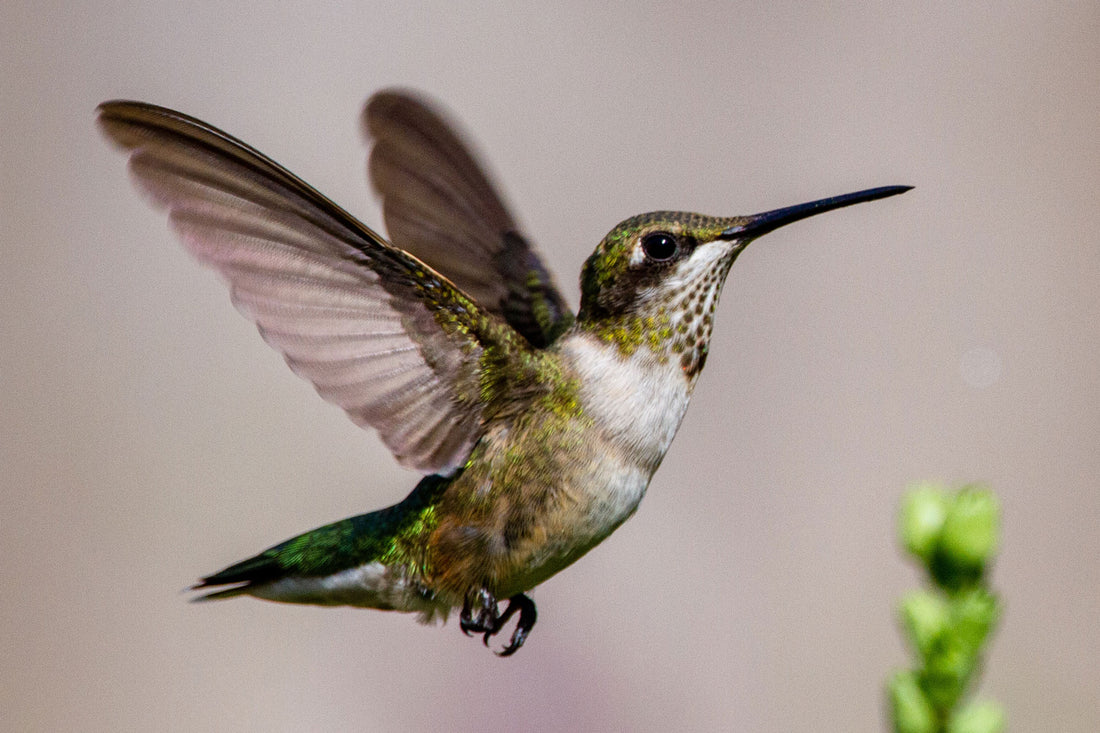
How to Identify Different Types of Hummingbirds
Share
Hummingbirds are fascinating creatures that are often admired for their stunning beauty, remarkable agility, and unique behavior. With over 300 species of hummingbirds found in the Americas, it can be challenging to distinguish between the different types of hummingbirds. In this article, we will discuss how to identify different types of hummingbirds by their physical features, behavior, and habitat.
Understanding Hummingbirds
Before we dive into identifying different types of hummingbirds, it's essential to have a basic understanding of hummingbirds. Hummingbirds are small, colorful birds that can flap their wings up to 80 times per second. They are the only birds that can hover in mid-air, and they have the ability to fly backward and upside down. They have long, thin beaks that are used to extract nectar from flowers, and they play a crucial role in pollinating plants.
Physical Features
One of the easiest ways to identify different types of hummingbirds is by their physical features. Hummingbirds come in a variety of colors and sizes, and they have distinct physical features that set them apart from one another.
Size
Hummingbirds are some of the smallest birds in the world, and they range in size from 2 to 8 inches in length. The smallest species of hummingbird is the bee hummingbird, which is only 2.25 inches long, while the largest species of hummingbird is the giant hummingbird, which is up to 8 inches long.
Color
Hummingbirds come in a variety of colors, including green, blue, purple, red, and orange. The colors of hummingbirds vary based on their gender and age, and some species have unique color patterns that make them easy to identify.
Beak
Hummingbirds have long, thin beaks that are used to extract nectar from flowers. The shape and size of their beaks can vary based on the species, and some species have beaks that are curved or hooked.
Tail
The shape and length of a hummingbird's tail can also vary based on the species. Some species have long, forked tails, while others have short, rounded tails.
Behavior
Another way to identify different types of hummingbirds is by their behavior. Hummingbirds have unique behaviors that set them apart from other birds.
Flight Patterns
Hummingbirds have remarkable agility and are known for their ability to hover in mid-air. Some species of hummingbirds have unique flight patterns that make them easy to identify, such as the Anna's hummingbird, which flaps its wings in a figure-eight pattern.
Feeding Habits
Hummingbirds primarily feed on nectar from flowers, but they also eat insects and spiders. Some species of hummingbirds have unique feeding habits that make them easy to identify, such as the sword-billed hummingbird, which has a long beak that is longer than its body to reach nectar from long flowers.
Mating Rituals
Hummingbirds have unique mating rituals that can vary based on the species. Some species of hummingbirds perform elaborate courtship displays, such as the male Long-tailed sylph, which performs an aerial display for females.
Habitat
The habitat of a hummingbird can also be a useful tool in identifying different types of hummingbirds. Hummingbirds can be found in a variety of habitats, including forests, deserts, and mountains.
Range
Different species of hummingbirds can be found in different regions of the Americas. For example, the Ruby-throated hummingbird can be found in the eastern United States, while the Violet-crowned hummingbird is found in the southwestern United States and Mexico.
Altitude
Some species of hummingbirds are adapted to living at high altitudes, while others live in lowland areas. The Andean Hillstar, for example, is a species of hummingbird that is found in the Andes mountains of South America, where they live at elevations up to 15,000 feet.
Habitat Preferences
Hummingbirds have specific habitat preferences, which can help in identifying different species. For example, the Costa's hummingbird is found in desert regions, while the Black-chinned hummingbird prefers mountainous habitats.
Identification Tools
In addition to physical features, behavior, and habitat, there are a few tools that can help you identify different types of hummingbirds.
Field Guides
Field guides are books that contain detailed information about different species of birds, including hummingbirds. They typically include descriptions of physical features, behavior, and habitat, as well as range maps and photos.
Binoculars
Binoculars can be a useful tool for identifying hummingbirds, as they allow you to see the birds up close. Look for specific physical features, such as color patterns and beak shape, to help identify the species.
Birding Apps
There are several birding apps available that can help you identify different types of hummingbirds. These apps typically include photos and recordings of bird calls, as well as range maps and descriptions of physical features and behavior.
Conclusion
Identifying different types of hummingbirds can be challenging, but with a little knowledge and some observation, it can be a rewarding experience. By paying attention to physical features, behavior, and habitat, as well as using identification tools such as field guides, binoculars, and birding apps, you can become an expert at identifying hummingbirds in no time.
